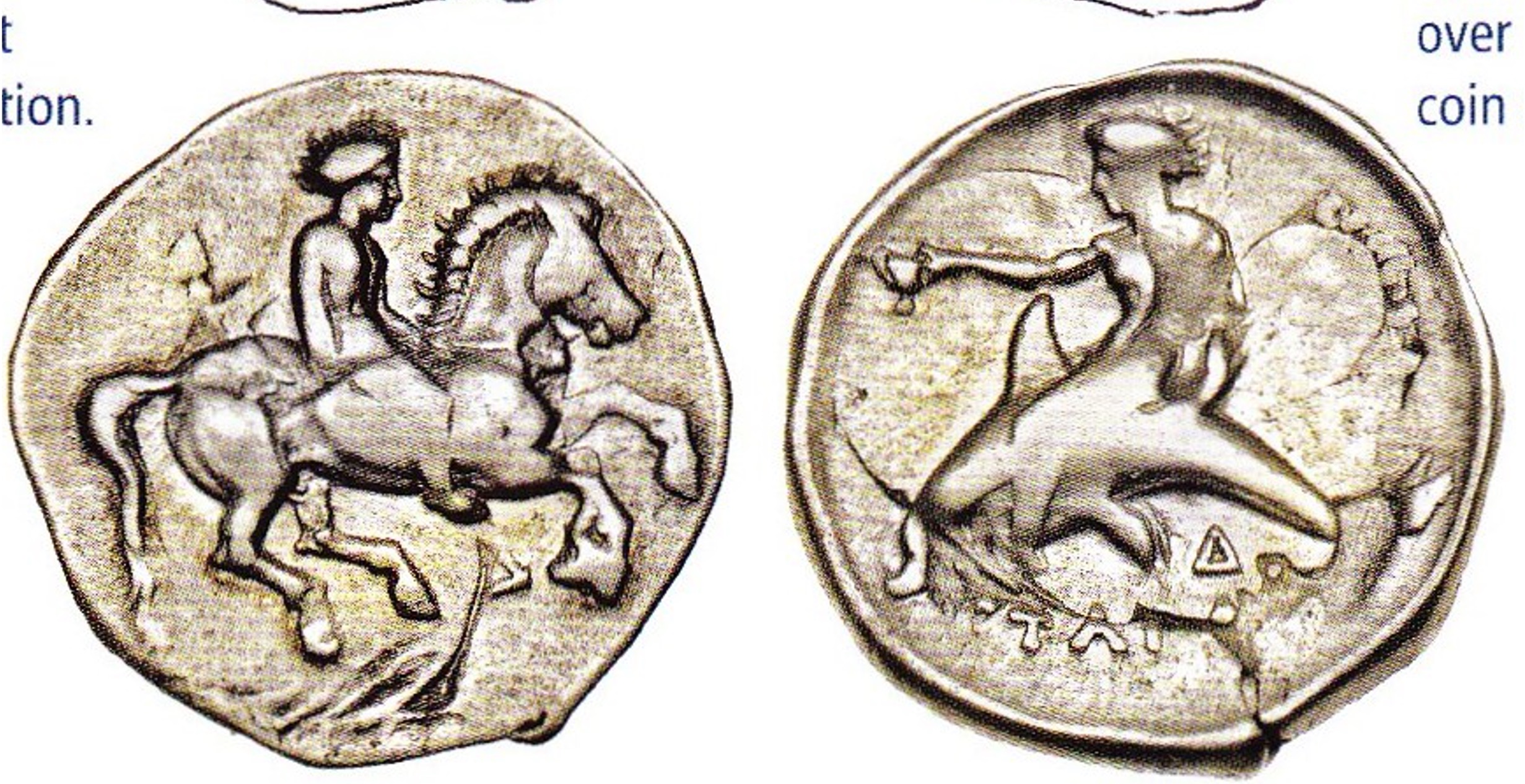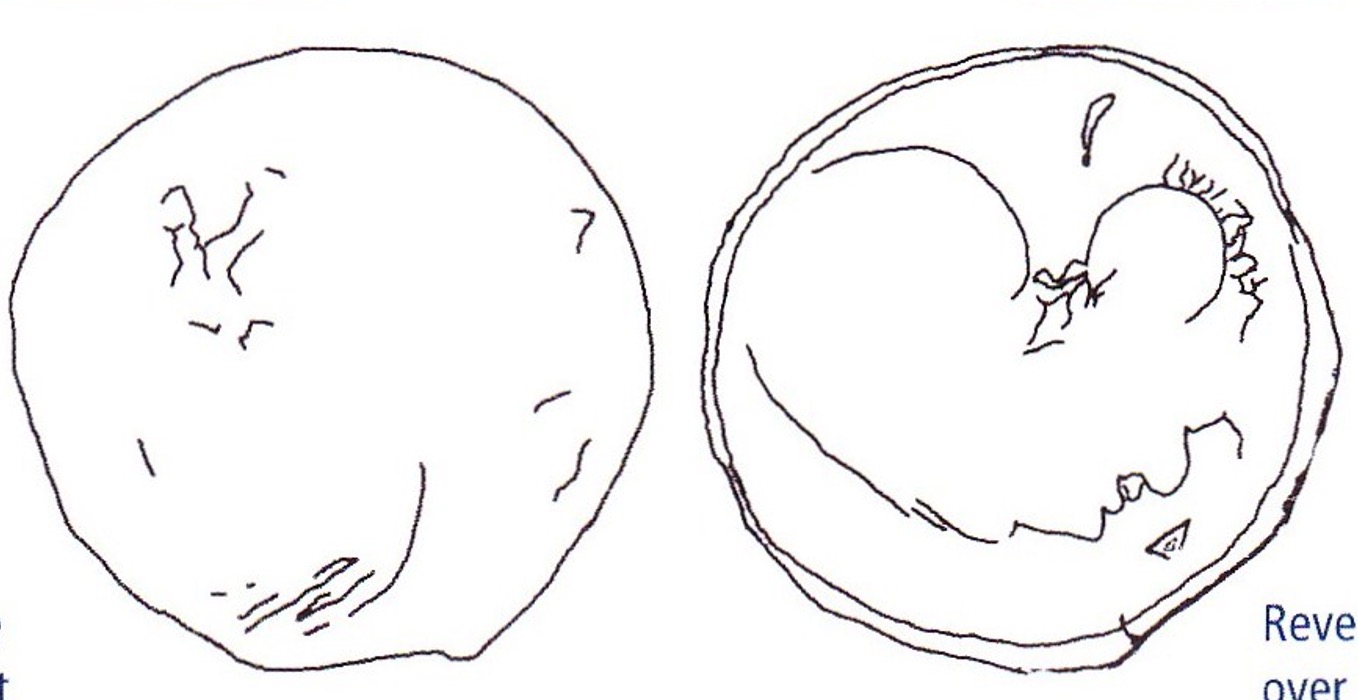2348 - Taras (nomos rider/Taras FB 40) over Dyrrachium (Pegasus/Athena) (MacDonald coll., 4)
From SILVER
| Line 9: | Line 9: | ||
|Mint=Taras | |Mint=Taras | ||
|Ancient region=Magna Graecia (Calabria) | |Ancient region=Magna Graecia (Calabria) | ||
| − | |Date from= | + | |Date from=380 BCE |
|Date to=355 BCE | |Date to=355 BCE | ||
|Period=Classical | |Period=Classical | ||
Revision as of 10:51, 13 June 2023
380 BCE - 355 BCE | TAPAΣ
Location/history
| Private collection(s)Private collection(s) ᵖ: | David MacDonald collection |
Overstriking coin
Description
| ObverseInscription or printing placed on the obverse.: | Horseman cantering right, arm hanging at side. Below horse, Δ. | ReverseInscription or printing placed on the reverse.: | TAPAΣ (Greek) Male character (Taras or Phalanthos), nude, seated sideways on dolphin left, holding kantharos in extended arm. |
Mint and issuing power
| MintIdentifies the place of manufacture or issue of a numismatic object.: | Taras | Ancient regionAncient region. | Magna Graecia (Calabria) | Modern countryModern country: Italy | AuthorityIdentifies the issuing power. The authority can be "pretended" when the name or the portrait of X is on the coin but he/she was not the issuing power. It can also be "uncertain" when there is no mention of X on the coin but he/she was the issuing power according to the historical sources: |
Chronology
| FromIdentifies the initial date in a range assigned in a numismatic context. 380 BCE toIdentifies the final date in a range assigned in a numismatic context.. 355 BCE | Classical 480-323 BC |
Physical description
| MetalThe physical material (usually metal) from which an object is made.: Silver |
WeightWeight of the numismatic object (in grams). in grams: 7.717.71 g <br />7,710 mg <br /> | DenominationTerm indicating the value of a numismatic object. Examples: tetradrachm, chalkous, denarius.: didrachm / nomos |
AxisDescribes the directional relationship between the obverse and reverse of a numismatic object.: 22 mm <br />0.2 cm <br /> |
| StandardStandard.: Italic-Tarentine | |||
References
| Coin referenceReference of the Coin: | Fischer-Bossert 1999, n° 612, MacDonald 2009, p. 8, n° 4 | Coin series referenceReference to coin series study: | Fischer-Bossert 19991Fischer-Bossert 1999, group 40, n° 612 (V240/R468)., HGC 12HGC 1, n° |
Overstruck type
Description
| ObverseInscription or printing placed on the obverse.: | Pegasus flying left. Below, Δ (visible: rear legs, portion of wing, other slight traces). | ReverseInscription or printing placed on the reverse.: | ΔΥΡΡΑΧΙΝΩΝ (Greek) Head of Aphrodite left, wearing Corinthian helmet. Behind, club (visible: outline of Aphrodite's head. Before Δ. Behind head, small portion of club). |
Mint and issuing power
| MintIdentifies the place of manufacture or issue of a numismatic object. ᵖ: | Dyrrhachium | Ancient regionAncient region. ᵖ | Illyricum | Modern countryModern country: Albania | AuthorityIdentifies the authority in whose name (explicitly or implicitly) a numismatic object was issued. ᵖ: |
Chronology
| FromIdentifies the initial date in a range assigned in a numismatic context. 360 BCE toIdentifies the final date in a range assigned in a numismatic context.. | periodTime period of the numismatic object. |
Physical description
| DenominationTerm indicating the value of a numismatic object. Examples: tetradrachm, chalkous, denarius. ᵖ: | Stater |
References
| Coin type referenceReference to coin series study ᵖ: | Calciati 19903Calciati 1990, vol. 2, p. 357-369 |
Additional data
| Frequency of overstrikesFrequency of overstrikes: | Level of confidenceLevel of confidence of the identification: | ||
| RemarksRemarks: | |||
References
- ^ Fischer-Bossert, Wolfgang (1999), Chronologie der Didrachmenprägung von Tarent, 510-280 v. Chr., Berlin, De Gruyter, xvii, 495 p., [84] pl.
- ^ Hoover, Oliver D. (2018), The Handbook of Greek Coinage Series, Volume 1. Handbook of Coins of Italy and Magna Graecia, Sixth to First Centuries BC., Lancaster-London, 2018, lxi, 527 pages, 23 cm
- ^ Calciati, Romolo (1990), Pegasi, Mortara, Edizioni I.P..

